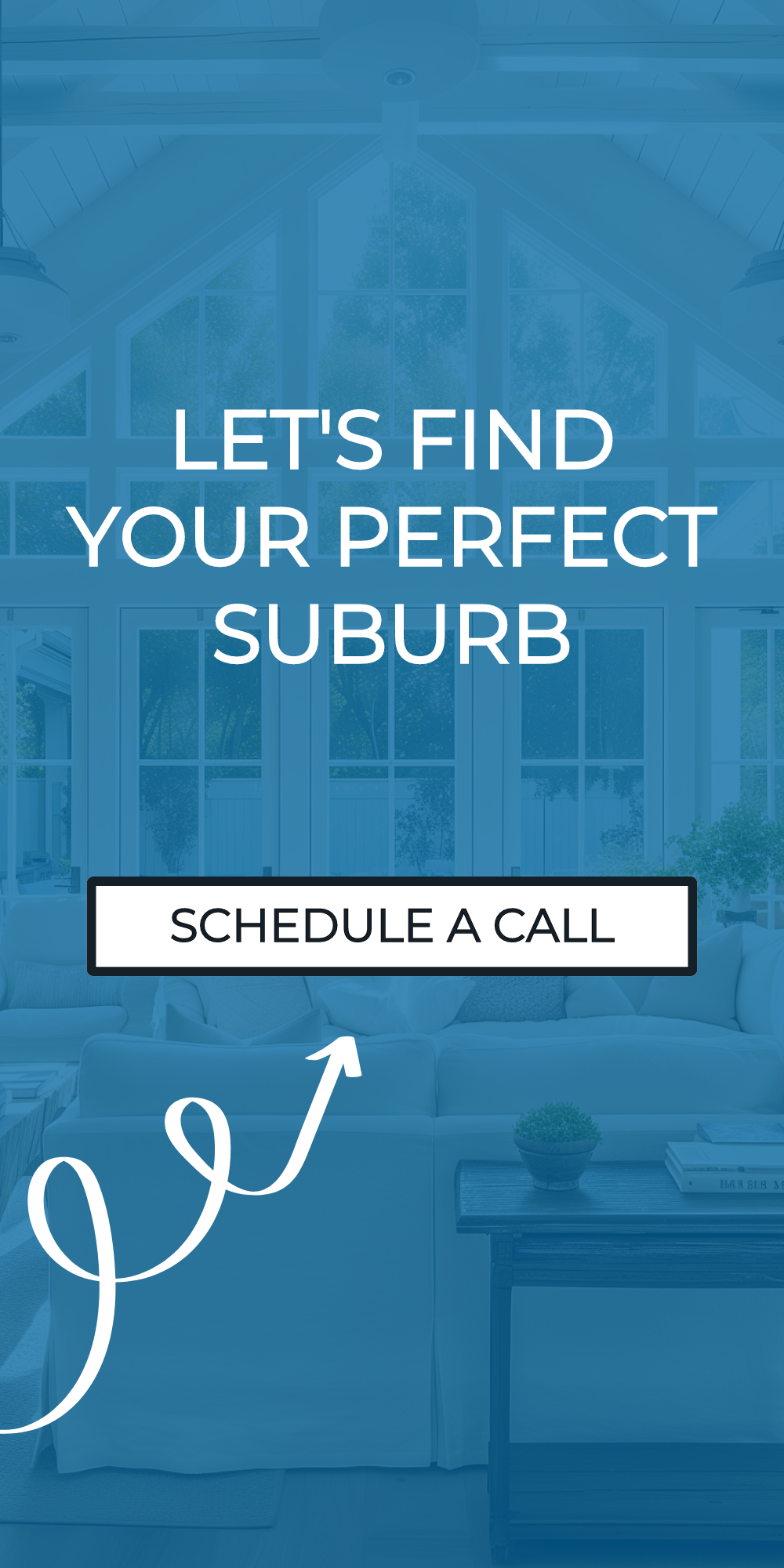There’s no one-size-fits-all answer — and that’s exactly the point.
When you think about walkability in the suburbs, what comes to mind? Strolling from your front door to the train station, with a stop for coffee along the way? Heading out with the dog or kids for a sidewalk-loop around the block? Or maybe it’s being able to park once in a charming downtown and wander from the farmers market to brunch to your favorite indie bookstore. The truth? Walkability looks different for every person and every town.
That’s why it’s one of the first things we unpack on a Strategy call. For some families, ultimate walkability is non-negotiable—think city-style living in the suburbs, where you can walk from your house to downtown, to school, the train, the coffee shop, and back home again, all without ever grabbing your keys. For others, it’s about finding a neighborhood where the kids can safely ride scooters, walk the dog, or play catch in the driveway, even if downtown is a short drive away.
Some towns offer it all: walkable downtowns with neighborhoods just steps away. Others might be car-dependent, but give you more land, more privacy, and a different kind of lifestyle that, in many cases, clients never knew they wanted, until they saw it for themselves.
Here’s what we mean:
Ultimate Walkability
These are the towns where you truly never need to get in the car. You can live just blocks from downtown, the train, and all the everyday must-haves—coffee, groceries, a wine bar, a good playground. In these communities you’ll see families walking to and from school every day, walking the dogs in the early evening, and strolling to grab a quick softserve or slice when the weather’s warm. These types of communities often attract city dwellers who want to keep that same freedom and flow in their suburban life.
Some Walkability
You might need to drive into town, but once you’re there? Park the car and walk. These towns offer vibrant, compact downtowns. That said, depending on where you live, key amenities and destinations may not be walkable from home. Still, you get that small-town energy, complete with restaurants, shopping, and seasonal events. Many clients find this to be the perfect middle ground: more space at home, with downtown just a quick hop away.
Neighborhood Walkability
Maybe walkability isn’t about coffee shops and train stations, it’s about lifestyle. A safe, sidewalk-lined neighborhood where you can walk with a stroller, ride bikes, or take the pup for a loop after dinner. You might not walk into town, but you’re still getting outside, moving, and engaging with your community in a meaningful way.
Driving Lifestyle
Then there are towns where the norm is jumping in the car for everything. These spots tend to offer larger lots, more privacy, and a slower, quieter pace—something many clients don’t expect to love, but often do once they see it in action. And while you may not walk to town, you’ll likely have room for a pool, a backyard trampoline, and enough space to host every family holiday.
So, what’s the takeaway?
Walkability matters, but what it means to you is what matters most. That’s why our Strategists ask about it early and often. We want to understand your vision of “walkable,” what you need now, and how you see your life evolving in the suburbs. Then, we help you explore towns that match that vision, and even a few that might surprise you.
Our advice? Tour. Explore. See for yourself. You can’t always gauge walkability from a map. Sometimes, it’s not until you’re standing on a tree-lined street with a latte in hand or cruising through wide-open roads with fall leaves swirling around that you realize what “home” really feels like.
Ready to find your version of walkable? Let’s talk. Schedule your free initial strategy call now. We’ll help you find the town that fits your lifestyle—whatever walkable means to you.

